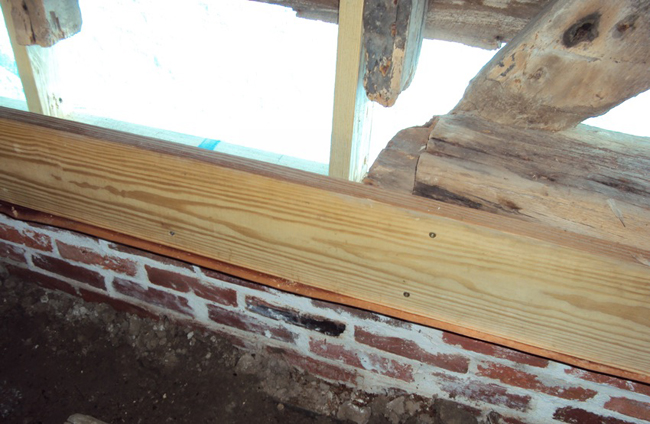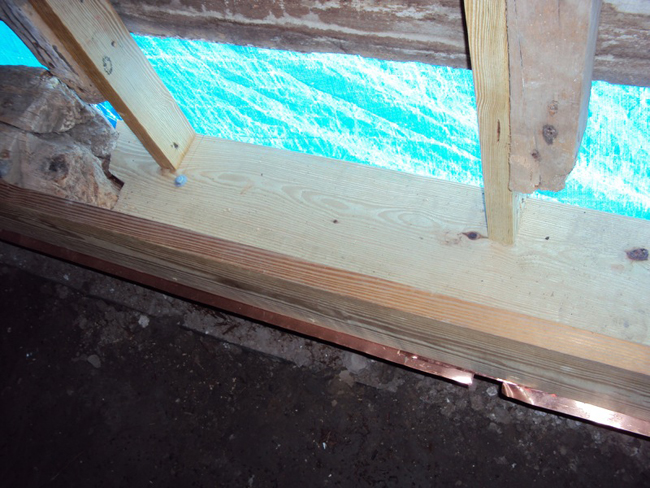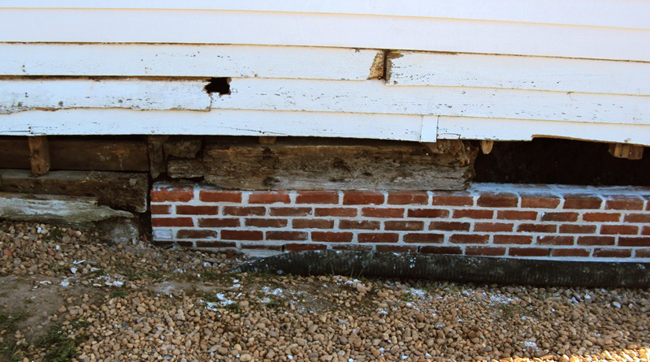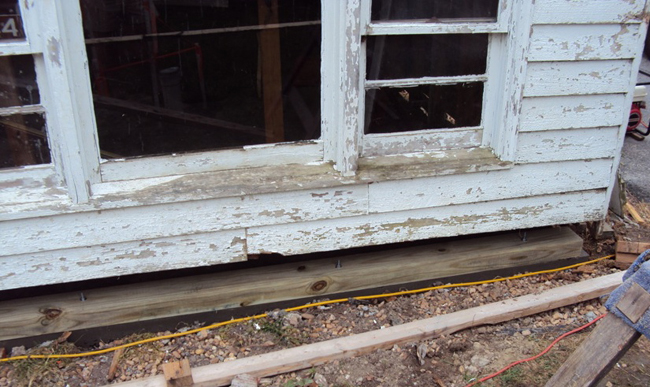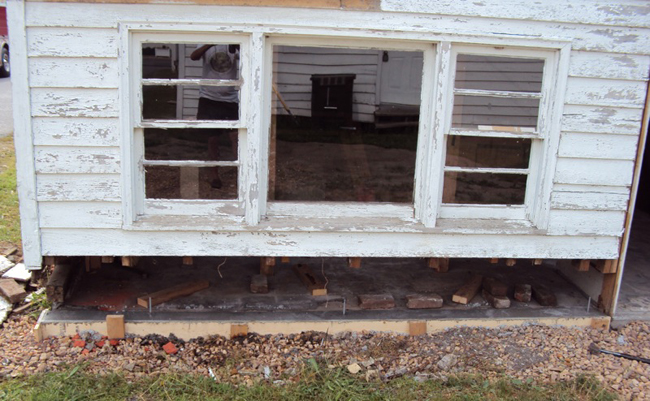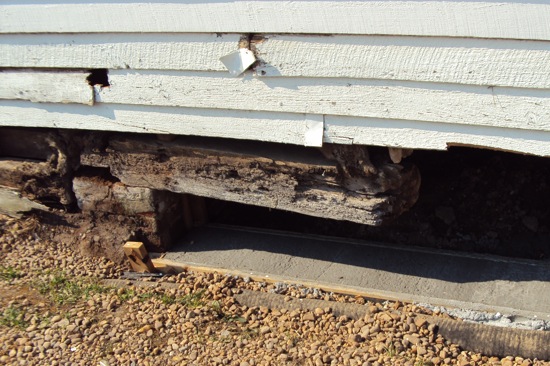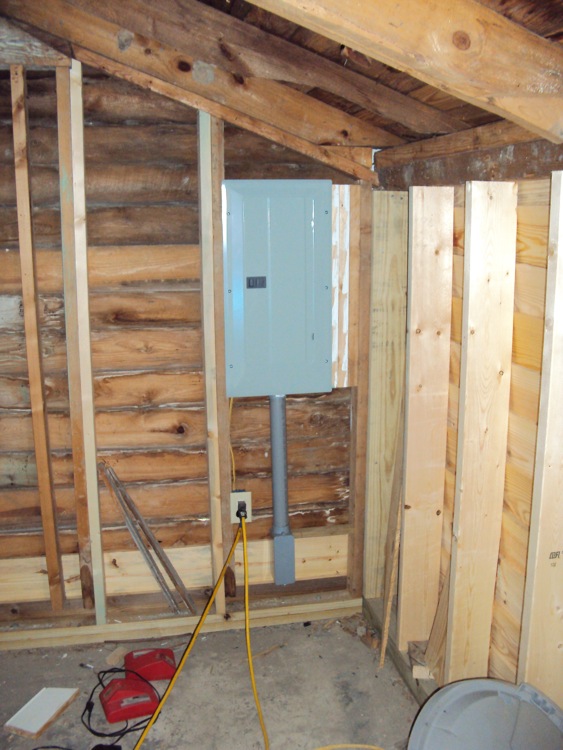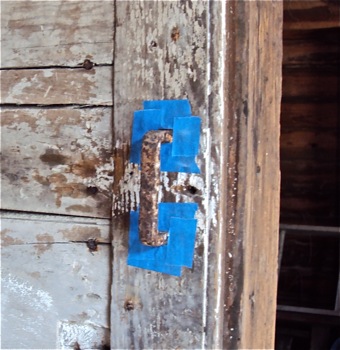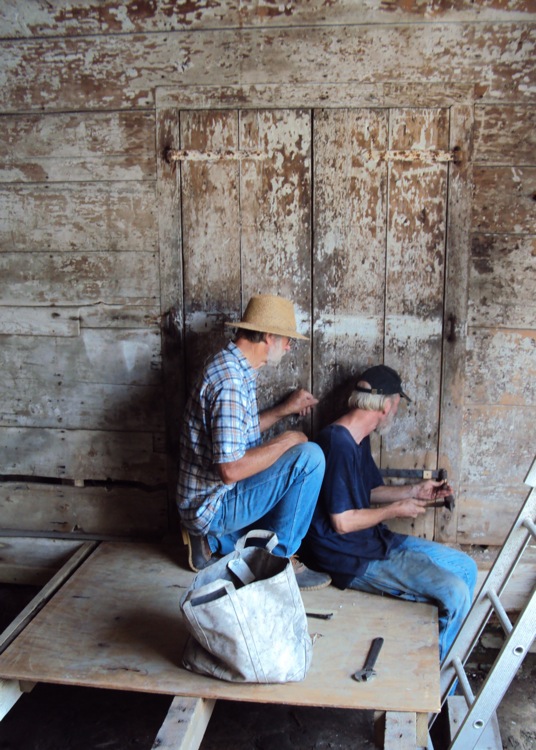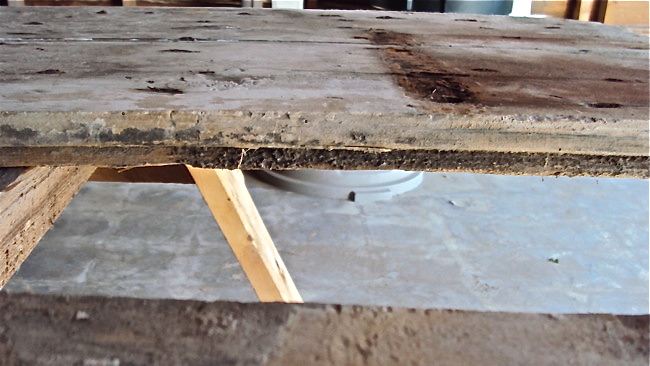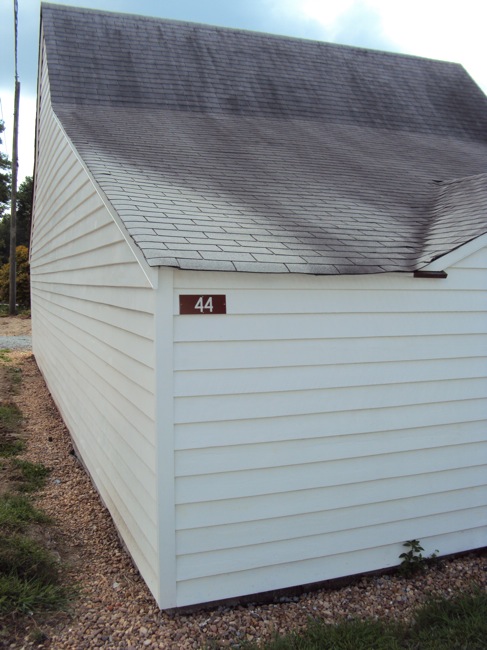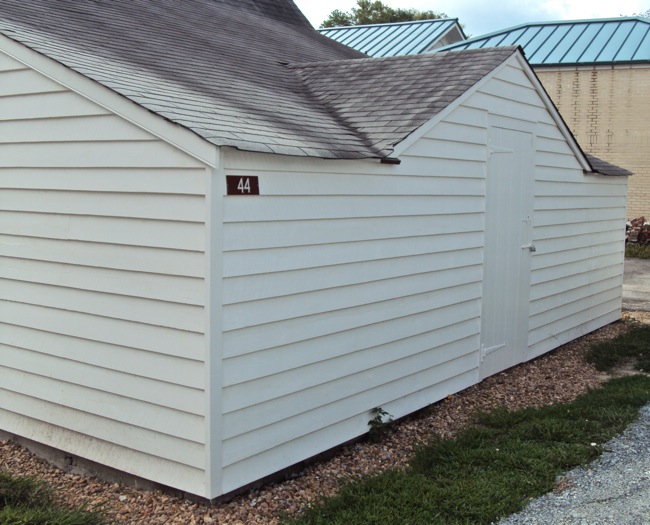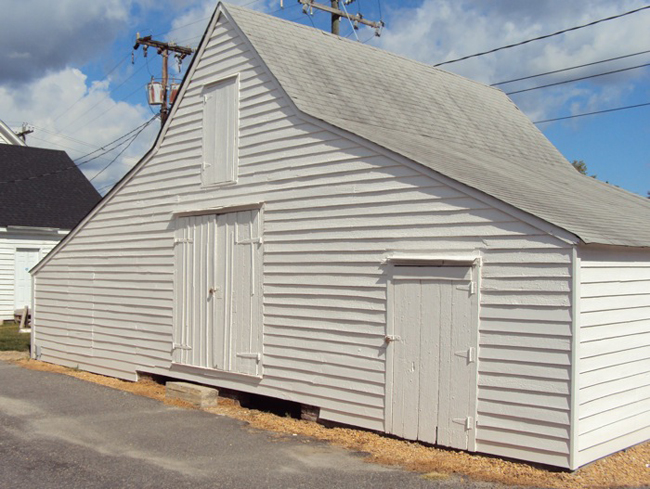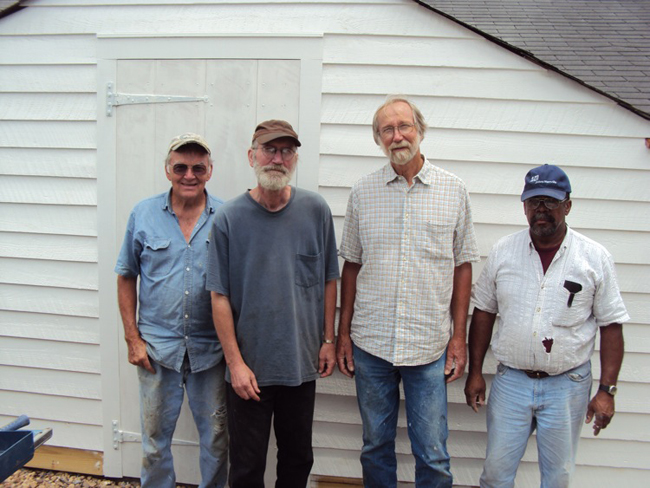Preservation and Interpretation
Thomas James Store Structural Stabilization, May-August 2010
Work on the original building focused on the east and north walls. On the east wall, floor joists that had separated from the sill (fig. 1) were rejoined, using least invasive methods and treated lumber material (fig. 2 ).
North wall foundations had subsided and were disintegrating due to lengthy moisture problems (fig. 3). The central brick pier was removed and cement footings poured (fig. 4).
Since the original sill had been cut to fit either side of the original brick chimney, and lacked a central support, a brick wall (consisting of old, local brick, identical in size and color to bricks in the northwest-corner pier, with period-type mortar) was built between the two corner piers (fig. 5). Remnants of the original sill were laid on the brick wall – with a copper sheet moisture barrier – and a treated lumber section shaped at each end and placed between them (fig. 6). Wall joists were strengthened with treated lumber extensions, the whole secured by a new 2x8 treated board placed on its side on the wall (fig. 7).
Long-term plans call for future interpretive/public use of the east and west “wings,” so the “envelope building” had also to be stabilized. All sills were extensively worm-eaten or rotted (having been laid on the ground, the cement slabs poured inside them), and had to be replaced (figs. 8; 9; 10; 11).
As much of the old (but not original) siding as it was possible to keep was retained, though virtually all of the north wall siding was rotten, much of it crumbling in the hands (fig. 12).
The 1950s west wall treatment (much of it rotten) was replaced by boards and a period-style board door (fig. 13). The west wing had been widened for this addition. This was strengthened (fig. 14).
At the south end of the west wall of the original structure, the original siding had been cut and removed, being replaced by later boards (fig. 15). These were removed and an opening left for future people circulation within the building.
The rare ironwork survivals in the building were treated in situ, (for example, fig. 16) by Richard M. Guthrie, who also fabricated exact reproductions of the original lower hinges and pintels on the original front doors – rusted through and broken (fig. 17). Detritus residue on the inner, hinge edge of these doors seemed to indicate a prior flooding level (fig. 18).
Salt efflorescence on the ceiling (fig. 19) was lightly brushed off, and the dirt on the attic floor, mixed with grease from curing hams, which had been hung from the collar ties (fig. 20) was vacuumed up.
All new exterior siding was primed and the whole building painted (figs. 21; 22; 23; 24).
For the above work, local artisans Bobby Stewart Sr. (far left), Henry Schlenk (second from right), and Hirbry Payton Jr. (far right) were joined by former Colonial Williamsburg master blacksmith Richard M. Guthrie (fig.25).
In the fall of 2009, a drain was installed around the entire building (most visible in figs. 23 and 24). The building is now registered as an archaeological site with the Commonwealth of Virginia’s Department of Historic Resources.
Report by Graham Hood, October 2010.
* There is a more complete photographic coverage of the stabilization project, with an accompanying list in the Archives of the Mathews County Historical Society, housed in the Archives of Mathews Memorial Library.




